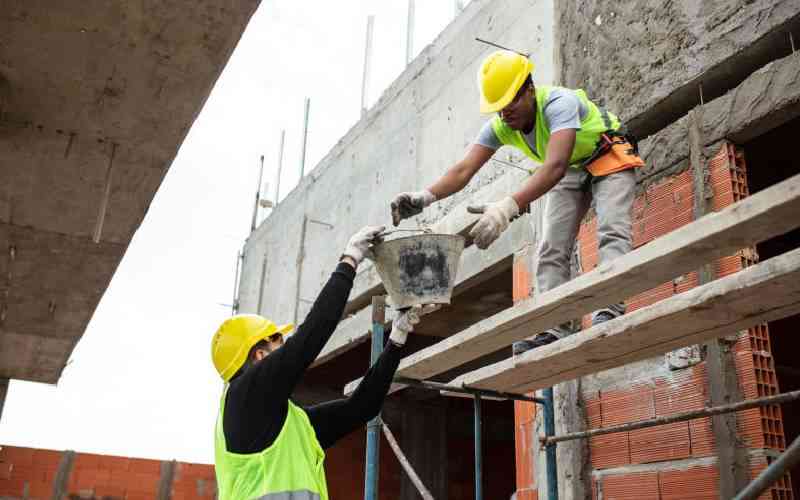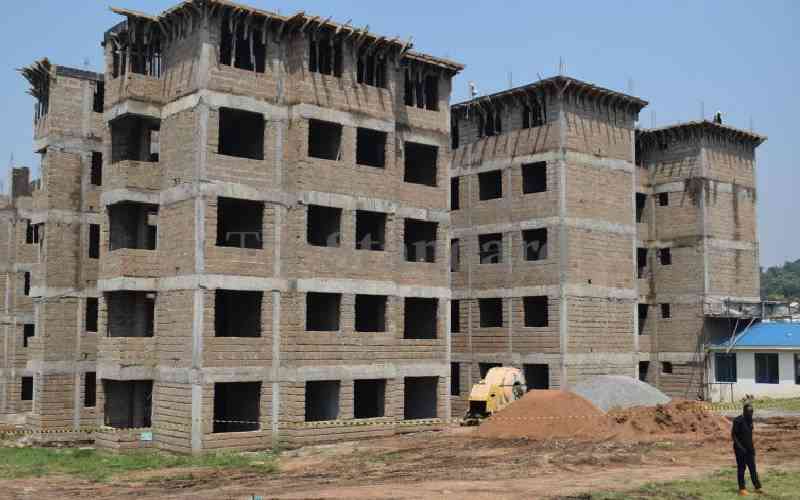Why is Kenya’s mortgage market still small even though the country is witnessing rapid growth in the real estate sector?
Statistics show that loans uptake in the building and construction sector reduced from Sh106.3 billion in 2015 to Sh104.8 billion in 2016. This was a sharp contrast to mid-2010 when the number of new loans was 2,966 in the building and construction sector.
But why is there a low mortgage uptake amidst a thriving housing market? Christopher Mutuku, a real estate consultant with Africa Infrastructure Development Company, says that mortgage uptake is supposed to have been on the rise as it is one of the best ways to buy a home.
However, a number of challenges have made mortgage growth to stagnate. Yet it is the only financing model offering close to 100 per cent financing for home purchase.
“Mortgage is among the best way to buy a house since you get 80 per cent of the value of the house paid for. However, many still shy away from it,” says Mutuku.
The average new mortgage loan size has been about Sh8 million for the last one year, indicating that the housing finance market is yet to move downstream.
He says this has been due to the challenges of the undeveloped medium-to-low income housing market or the latent demand in the high-income housing market that is yet to be met.
According to Teddy Okinji, a marketing consultant at Sterling Partners Limited, a property development company, rising construction activity has not reflected positively on the mortgage sector.
“There has been a very slow growth in the mortgage industry in spite heightened construction activity...,” says Okinji.
Okinji says that it is not encouraging that people are nowadays purchasing houses for investment the same way they buy stocks, but not through mortgages. He asserts that stagnation in mortgage uptake can be partly attributed to emerging market forces.
He says some financiers, especially banks, fear a backlash from the youthful market segment in the form of loan defaults.
Surprisingly, he says, this is the segment that is ready to take mortgage to finance their home buying.
“The people who buy houses from us through mortgages that a number of banks have approved have an average monthly income of Sh250,000. Most mortgage seekers lack that kind of income and thus disqualified,” says Okinji.
According to the recently-launched Kenya Bureau of Statistics Economic Survey, most of the adult population, which accounts for nearly 56 per cent, is now dreaming of home ownership. The Kenyan middle-class income ranges from Sh23,670 to Sh199,999 per month and comprise about 45 per cent of the country’s population.
Apart from the tough economic tides in the market, risks associated with mortgages have also featured much as the main reason why mortgages are recording low growth.
Stay informed. Subscribe to our newsletter
George Laboso, Barclays Bank Head of Mortgage in Kenya, says affordability is the first key thing that someone shopping for a mortgage should consider.
“Do self-examination of your finances with a lifestyle audit and check how much debt you can comfortably handle without interfering with your basic operations,” says Laboso.
He says that affordability is not based on what someone has today but the financial position for the time that you will be paying back the mortgage.
“Ask yourself whether you will be able to continue to make the full payments on time and how repaying will affect your money spending and your ability to deal with sudden or unexpected financial needs,” says Laboso.
He says that since life is unpredictable, one should evaluate source of income and what happens should one’s income reduce or should one be retrenched.
“Your current and future financial position is paramount. Imagine a situation where your lifestyle costs rise as a result of a marriage or even depending on the type of mortgage you have, your mortgage payments increase if your interest rate rises. You can guess what will happen,” he says.
 The Standard Group Plc is a
multi-media organization with investments in media platforms spanning newspaper
print operations, television, radio broadcasting, digital and online services. The
Standard Group is recognized as a leading multi-media house in Kenya with a key
influence in matters of national and international interest.
The Standard Group Plc is a
multi-media organization with investments in media platforms spanning newspaper
print operations, television, radio broadcasting, digital and online services. The
Standard Group is recognized as a leading multi-media house in Kenya with a key
influence in matters of national and international interest.
 The Standard Group Plc is a
multi-media organization with investments in media platforms spanning newspaper
print operations, television, radio broadcasting, digital and online services. The
Standard Group is recognized as a leading multi-media house in Kenya with a key
influence in matters of national and international interest.
The Standard Group Plc is a
multi-media organization with investments in media platforms spanning newspaper
print operations, television, radio broadcasting, digital and online services. The
Standard Group is recognized as a leading multi-media house in Kenya with a key
influence in matters of national and international interest.








